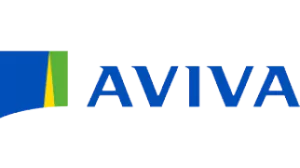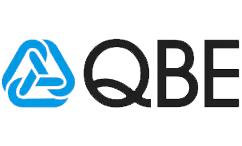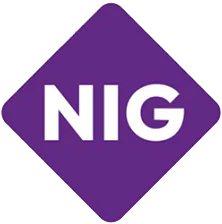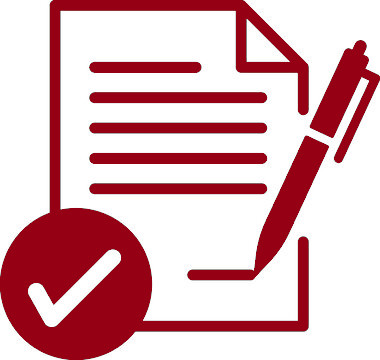We compare quotes from leading insurers
Protect Your Foam Manufacturing Business with Specialist Insurance Coverage
Foam manufacturing presents unique risks that standard business insurance simply cannot address. From highly flammable materials and chemical storage to complex production processes and product liability concerns, foam manufacturers need specialist coverage designed specifically for their industry.
At Insure24, we understand the intricate challenges facing foam manufacturers. Our tailored insurance solutions provide comprehensive protection against fire risks, chemical hazards, equipment breakdown, and product liability claims, ensuring your business can operate with confidence.
Comprehensive Coverage for Foam Manufacturers
Fire and Explosion Protection
Specialist coverage for highly flammable foam materials, including protection against fire spread, explosion damage, and business interruption from fire-related incidents.
Chemical Storage Liability
Protection against risks associated with storing and handling chemicals used in foam production, including environmental cleanup and third-party claims.
Product Liability Insurance
Coverage for claims arising from defective foam products, including fire safety failures, toxic emissions, and performance issues in end-use applications.
Equipment Breakdown
Protection for specialized foam manufacturing equipment, including mixing systems, molding machines, cutting equipment, and quality control instruments.
Business Interruption
Coverage for lost income and ongoing expenses when production is halted due to fire, equipment failure, or other covered perils.
Environmental Liability
Protection against pollution incidents, chemical spills, and environmental cleanup costs associated with foam manufacturing processes.
Industry-Specific Risks We Cover
Fire and Safety Risks
- Highly flammable polyurethane foam materials
- Isocyanate chemical reactions and toxic fume release
- Static electricity buildup during production
- Hot work processes and welding operations
- Electrical equipment in chemical environments
- Dust accumulation and explosion risks
Chemical and Environmental Hazards
- Toluene diisocyanate (TDI) and methylene diphenyl diisocyanate (MDI) exposure
- Volatile organic compound (VOC) emissions
- Chemical storage tank leaks and spills
- Groundwater and soil contamination
- Air quality violations and regulatory fines
- Waste disposal and recycling compliance
Product and Operational Risks
- Foam fire retardancy failures in furniture and bedding
- Toxic emissions from foam products in fires
- Quality control failures and batch contamination
- Supply chain disruptions affecting raw materials
- Equipment calibration errors affecting product consistency
- Workplace injuries from chemical exposure
Why Choose Specialist Foam Manufacturing Insurance?
- Industry Expertise - Our underwriters understand foam manufacturing processes, from flexible polyurethane foam to rigid foam insulation, ensuring appropriate coverage for your specific operations.
- Regulatory Compliance - Coverage designed to meet HSE regulations, REACH compliance, and fire safety standards specific to foam manufacturing and chemical handling.
- Comprehensive Protection - All-in-one coverage combining property, liability, environmental, and business interruption protection tailored to foam manufacturing risks.
- Claims Expertise - Specialist claims handling with technical knowledge of foam manufacturing processes and industry-specific loss scenarios.
How to Get Your Foam Manufacturing Insurance
- 1. Initial Consultation - Discuss your foam manufacturing operations, production volumes, chemical usage, and specific risk concerns with our specialist team.
- 2. Risk Assessment - We evaluate your facility, safety procedures, environmental controls, and regulatory compliance to determine appropriate coverage levels
- 3. Tailored Quotation - Receive a comprehensive quote covering all aspects of your foam manufacturing operations with competitive premiums from specialist insurers.
- 4. Policy Implementation - Quick policy setup with immediate coverage and ongoing support for claims, renewals, and risk management advice.
Regulatory Compliance and Standards
Foam manufacturing is subject to extensive regulatory oversight. Our insurance policies are designed to support compliance with:
Health and Safety Executive (HSE)
COSHH regulations for chemical handling, workplace exposure limits, and safety management systems.
REACH Regulation
Chemical registration, evaluation, and authorization requirements for foam production chemicals.
Fire Safety Standards
BS 5852, BS EN 1021, and furniture fire safety regulations for foam products.
Environmental Permits
Waste management, emissions control, and environmental protection requirements.

"After a chemical spill incident, Insure24's environmental coverage saved our business from bankruptcy. Their understanding of foam manufacturing risks is exceptional.
Manufacturing Director, Midlands Foam SpecialistWhy Choose Insure24 for Foam Manufacturers Insurance?
- Specialist Knowledge - We understand the unique risks facing foam manufacturers operators
- Comprehensive Coverage - Multiple insurance products designed to work together
- Competitive Pricing - Tailored quotes based on your specific venue and operations
- Expert Support - Dedicated team available when you need us most
- Quick Claims - Fast response when incidents occur
- FCA Regulated - Authorized and regulated by the Financial Conduct Authority
Protect Your Foam Manufacturing Business with Specialist Insurance Coverage
Get Your Foam Manufacturers Insurance Quote Today
Don't leave your foam manufacturing business exposed to unnecessary risks.
Our specialist team will assess your venue's unique needs and provide a comprehensive insurance solution that protects your business, your customers, and your livelihood.
Call us now: 0330 127 2333
Or get an instant online quote at insure24.co.uk
FREQUENTLY ASKED QUESTIONS
+-
What makes foam manufacturing insurance different from standard business insurance?
Foam manufacturing involves highly flammable materials, toxic chemicals, and complex production processes that create unique risks. Standard business insurance excludes many chemical-related claims and doesn't provide adequate fire coverage for foam materials. Specialist foam manufacturing insurance includes enhanced fire protection, chemical liability, environmental coverage, and product liability specifically designed for foam production risks.
+-
Does the insurance cover all types of foam manufacturing?
Yes, our policies cover flexible polyurethane foam, rigid foam insulation, memory foam, latex foam, and specialty foam products. Coverage extends to furniture foam, mattress foam, packaging foam, automotive foam, and construction insulation foam manufacturing.
+-
What chemical storage risks are covered?
Coverage includes storage of isocyanates (TDI, MDI), polyols, catalysts, blowing agents, and flame retardants. This includes tank leakage, chemical spills, vapor releases, and environmental contamination from chemical storage areas.
+-
How does product liability work for foam manufacturers?
Product liability covers claims arising from foam products that fail to meet fire safety standards, emit toxic fumes, or cause injury through defective performance. This includes furniture fires, building insulation failures, and automotive foam defects.
+-
What fire risks are specifically covered?
Enhanced fire coverage includes rapid flame spread through foam materials, toxic smoke production, explosion risks from chemical reactions, and business interruption from fire damage. Coverage extends beyond standard fire policies to address foam-specific combustion characteristics.
+-
Is environmental cleanup covered?
Yes, environmental liability includes soil and groundwater contamination cleanup, air pollution incidents, regulatory fines, and third-party environmental claims. Coverage applies to both gradual pollution and sudden chemical releases.
+-
What equipment breakdown coverage is included?
Coverage includes foam mixing equipment, molding machines, cutting and shaping equipment, curing ovens, quality control instruments, and chemical handling systems. Both mechanical breakdown and electrical failure are covered.
+-
How is business interruption calculated for foam manufacturers?
Business interruption covers lost production revenue, ongoing expenses, and additional costs to maintain operations. Calculation considers production capacity, seasonal variations, contract commitments, and time needed to rebuild or repair specialized equipment.
+-
Are workplace injury claims from chemical exposure covered?
Employers liability covers workplace injuries from chemical exposure, respiratory problems from isocyanate exposure, skin sensitization, and long-term health effects. Coverage includes both acute exposure incidents and cumulative exposure claims.
+-
What documentation is needed for a quote?
We need details of production processes, chemical usage volumes, storage arrangements, safety procedures, environmental permits, fire protection systems, and previous claims history. Site plans and safety data sheets for chemicals used are also helpful.
+-
How quickly can coverage be arranged?
Once we have complete information about your operations, quotes can typically be provided within 48-72 hours. Coverage can commence immediately upon acceptance and premium payment.
+-
Are there any excluded foam types or processes?
Most standard foam manufacturing processes are covered. Exclusions may apply to experimental processes, non-approved chemicals, or operations not meeting minimum safety standards. Each case is assessed individually.
+-
What happens if regulations change?
Our policies include coverage for regulatory changes that require modifications to products or processes. This includes costs to reformulate products to meet new fire safety standards or chemical regulations.
+-
Is cyber insurance needed for foam manufacturers?
Yes, modern foam manufacturing relies heavily on computerized systems for process control, quality management, and customer data. Cyber insurance protects against system failures, data breaches, and ransomware attacks that could disrupt production.
+-
How are premium costs calculated?
Premiums are based on production volume, chemical types and quantities used, fire protection systems, safety procedures, claims history, and facility location. Manufacturers with excellent safety records and comprehensive risk management programs typically receive better rates.
+-
What support is available for risk management?
We provide access to specialist risk management consultants who understand foam manufacturing hazards. This includes safety audits, chemical handling assessments, fire protection reviews, and regulatory compliance guidance.
+-
Are international shipments covered?
Transit coverage can be arranged for foam products shipped domestically and internationally. This includes protection against damage, contamination, and liability claims arising during transportation.
+-
What about coverage for foam recycling operations?
Foam recycling and waste processing operations can be covered under specialist environmental liability policies. This includes contamination risks from processing used foam products and regulatory compliance for waste handling.
+-
How does the claims process work?
Claims are handled by specialists familiar with foam manufacturing processes. We provide 24/7 emergency response for major incidents, rapid assessment by technical experts, and support throughout the claims process to minimize business disruption.
+-
Can coverage be tailored for small foam manufacturers?
Yes, we offer scalable coverage options suitable for small family businesses through to large industrial foam manufacturers. Coverage limits and policy features can be adjusted to match your specific operations and budget requirements.
+-
What about coverage for foam testing and R&D activities?
Research and development activities, including foam testing, prototype development, and experimental processes, can be covered under specialist professional indemnity and product development policies.
+-
Is there coverage for supply chain disruptions?
Supply chain coverage can protect against losses when key chemical suppliers experience disruptions, affecting your ability to maintain production. This includes additional costs to source alternative materials and lost profits from production delays.
+-
How often should policies be reviewed?
Annual policy reviews are recommended, with additional reviews when you change production processes, introduce new foam types, expand facilities, or modify chemical usage. Regular reviews ensure coverage remains adequate as your business evolves.
+-
What specific foam types require specialist insurance coverage?
Memory foam, latex foam, polyurethane foam, rigid foam insulation, spray foam, acoustic foam, packaging foam, automotive foam, marine foam, and specialty foams like flame-retardant or antimicrobial variants all require tailored coverage due to their unique manufacturing processes and end-use applications.
+-
How does foam density affect insurance premiums?
Higher density foams typically present lower fire risks and may qualify for reduced premiums. Low-density foams burn faster and create more toxic smoke, potentially increasing premium costs. Density also affects storage risks and transportation hazards.
+-
Are foam cutting and fabrication operations covered separately?
Foam cutting, shaping, laminating, and fabrication operations can be covered under the same policy or separately depending on your business structure. Hot wire cutting, waterjet cutting, and adhesive bonding processes each present different risk profiles requiring specific coverage considerations.
+-
What coverage exists for foam dust explosion risks?
Foam dust from cutting and shaping operations can create explosion hazards. Coverage includes dust collection system failures, static electricity ignition, and explosion damage. Proper ventilation and dust control systems may reduce premium costs.
+-
How are isocyanate exposure claims handled?
Isocyanate exposure can cause respiratory sensitization and long-term health problems. Coverage includes immediate medical treatment, ongoing healthcare costs, compensation claims, and regulatory fines for exposure limit breaches. Proper ventilation and PPE programs are essential for coverage.
+-
What training requirements affect foam manufacturing insurance?
Proper staff training in chemical handling, fire safety, and emergency procedures can reduce premium costs. Insurance may require documented training programs, regular refresher courses, and certification for employees handling hazardous materials or operating specialized equipment.
+-
How are foam manufacturing startup companies covered?
New foam manufacturing businesses face unique challenges including limited operating history, evolving processes, and cash flow constraints. Specialized startup coverage can provide flexible terms, phased premium payments, and coverage that adapts as the business grows and stabilizes.
+-
What about coverage for foam manufacturing acquisitions and mergers?
During acquisitions or mergers, coverage must address changing risk profiles, integration of different safety standards, and potential legacy liabilities. Temporary coverage bridges can protect during transition periods while permanent coverage is arranged for the combined entity.
+-
Are there specific requirements for foam fire testing compliance?
Foam products must meet various fire safety standards depending on their application. Coverage includes costs of compliance testing, certification processes, and liability for products that fail to meet required standards after market release.
+-
How does foam manufacturing automation affect insurance?
Automated foam production systems can reduce human error risks but introduce new technology-related exposures. Coverage considerations include software failures, robotic equipment malfunctions, cybersecurity risks, and the need for specialized repair expertise.
+-
What coverage exists for foam manufacturing energy costs?
Energy-intensive foam manufacturing processes face risks from power outages and utility failures. Coverage can include additional costs for backup power, lost production from power interruptions, and spoiled materials requiring specific temperature or processing conditions.
+-
Are there considerations for foam manufacturing near water sources?
Facilities near rivers, lakes, or groundwater sources face enhanced environmental liability exposure. Coverage must address potential water contamination, stricter regulatory oversight, and higher cleanup costs due to proximity to sensitive environmental areas.
+-
How are foam manufacturing trade secrets protected?
Proprietary foam formulations and manufacturing processes require intellectual property protection. Coverage includes theft of trade secrets, employee disclosure violations, and competitive intelligence breaches that could compromise valuable manufacturing knowledge.
+-
What about coverage for foam manufacturing equipment financing?
Financed or leased equipment requires specific coverage to protect lender interests. Coverage must meet lender requirements while protecting the manufacturer's operational needs, including gap coverage and equipment replacement provisions.
+-
How are foam manufacturing regulatory changes handled?
Evolving regulations on chemicals, fire safety, and environmental protection can require costly process changes. Coverage can include costs to modify operations, reformulate products, and comply with new regulatory requirements affecting foam manufacturing.
+-
What specific coverage applies to rigid foam insulation manufacturers?
Rigid foam insulation manufacturers face building code compliance issues, thermal performance warranties, and installation-related claims. Coverage includes product performance failures, building damage from inadequate insulation, and liability for energy efficiency claims.
+-
Are there special considerations for foam manufacturing in industrial parks?
Operating in industrial parks may provide shared emergency services but can increase exposure to neighboring facility incidents. Coverage considerations include shared utility risks, coordinated emergency response, and potential impact from adjacent industrial operations.
+-
How does foam manufacturing shift work affect insurance?
24/7 foam manufacturing operations require enhanced safety protocols and emergency response capabilities. Night shift operations may face higher risks due to reduced supervision and emergency response availability, potentially affecting premium calculations.
+-
What coverage exists for foam manufacturing contract disputes?
Contract disputes with suppliers, customers, or service providers can disrupt operations. Legal expense coverage can protect against costs of defending or pursuing contract claims, while business interruption coverage addresses operational impacts during disputes.
+-
How are foam manufacturing weather-related risks covered?
Severe weather can disrupt foam manufacturing through power outages, transportation delays, and facility damage. Coverage includes storm damage, flood protection, and business interruption from weather-related supply chain disruptions affecting chemical deliveries.
+-
What about coverage for foam manufacturing employee health screening?
Regular health monitoring for employees exposed to foam manufacturing chemicals may be required. Coverage can include costs of medical surveillance programs, early detection screening, and workplace health assessments to prevent long-term exposure claims.
+-
Are there specific requirements for foam manufacturing waste heat recovery?
Waste heat recovery systems in foam manufacturing can reduce energy costs but introduce additional equipment risks. Coverage includes heat recovery system failures, efficiency losses, and potential safety hazards from heat recovery equipment malfunctions.
+-
How does foam manufacturing customer concentration affect coverage?
Heavy dependence on major customers creates business interruption risks if key relationships are lost. Coverage can include protection against customer insolvency, contract cancellations, and the costs of diversifying the customer base to reduce concentration risk.
+-
What coverage applies to foam manufacturing process improvements?
Implementing new manufacturing processes or efficiency improvements can introduce temporary risks. Coverage includes commissioning new equipment, process optimization costs, and protection during transition periods when both old and new systems operate simultaneously.
+-
How are foam manufacturing supplier audits covered?
Regular auditing of chemical suppliers and service providers helps maintain quality and safety standards. Coverage can include costs of supplier assessments, qualification processes, and potential liabilities discovered during supplier audit activities.


 0330 127 2333
0330 127 2333






